Last weekend, I saw my neighbor Sarah turn trash into treasure. She put celery bottoms in water on her windowsill. New green shoots grew in just days. “This cuts my grocery bill by $15 each month,” she said with a smile. That’s how I learned about kitchen scrap gardening.
What if you could turn vegetable ends, roots, and seeds into new food? That’s the magic of using food scraps to grow more. It helps reduce food waste and connects you to your food.
Growing from scraps is simple. You need just a few things under $20 and 5-10 minutes a day. It can save you money – up to $200 a year. Plus, it teaches you about living sustainably.
In this guide from Sustainable Home Magazine, you’ll learn to turn trash into plants. It’s perfect for anyone, whether you’re new to gardening or not. These easy steps help you live a more sustainable lifestyle.
Key Takeaways
- Transform vegetable scraps into new plants with minimal effort and basic supplies
- Reduce household food waste while growing fresh produce at home
- Save $100-200 annually through kitchen scrap gardening
- Create a self-sustaining growth cycle with just 5-10 minutes of daily attention
- Connect more deeply with your food sources through hands-on growing
- Learn practical sustainability skills suitable for gardeners of all experience levels
Getting Started with Kitchen Scrap Gardening
Start your kitchen scrap gardening today with just a few tools and a small space. It’s a great way to reduce food waste and grow fresh produce in your kitchen. You don’t need a green thumb or expensive gear to begin.
Kitchen scrap gardening is a great way to start living more sustainably. It turns food scraps into new plants, saving money and helping the planet. It’s easy and accessible for everyone.
Essential Tools for Successful Regrowth
To start your kitchen gardening, you’ll need a few basic items. Here’s what you’ll need:
- Containers – Use shallow dishes, yogurt cups, or seedling trays. Make sure they have holes for drainage.
- Clean water – Use filtered or tap water that has sat out overnight. This removes chlorine.
- Toothpicks – They’re great for holding items like avocado pits in place.
- Quality potting soil – Your scraps will need this to grow roots and continue growing.
- Small scissors or knife – Use these for trimming and preparing your scraps.
These basic supplies cost between $10-30. Many items you already have at home can also be used. This makes kitchen scrap gardening very affordable.

Understanding Regrowth vs. Composting
Regrowth and composting are both good for the environment, but they serve different purposes. Knowing the difference helps you use your kitchen scraps better.
| Aspect | Regrowth | Composting | Best For |
|---|---|---|---|
| Primary Goal | Regenerate new plants from food scraps | Break down organic matter into soil amendment | Different sustainability outcomes |
| Time Frame | Results in days to weeks | Months for complete decomposition | Short vs. long-term planning |
| Space Needed | Minimal – countertop or windowsill | Larger – outdoor bin or indoor system | Different living situations |
| Suitable Scraps | Specific plant parts with growth potential | Almost all organic kitchen waste | Maximizing waste reduction |
| End Product | New edible plants or ornamentals | Nutrient-rich soil for gardens | Different gardening needs |
Both practices are great for an eco-friendly kitchen. Use scraps not good for regrowth in your compost bin. This way, you use all your food waste.
Setting Up Your Kitchen Regrowth Station
Make a dedicated space for your regrowth station. Pick a spot that’s easy to reach but won’t get in the way. A corner of your counter with a compost bin nearby works well.
You only need a small space, about 1-2 square feet. This makes it perfect for even small apartments. Think about these things when setting up:
- Accessibility for daily monitoring and water changes
- Protection from curious pets or small children
- Proximity to natural light sources
- Easy-to-clean surfaces underneath containers
Keep your space organized for successful gardening. Use a tray to contain your projects. This makes it easy to move them and keeps surfaces clean. Label your containers if you’re growing different things to keep track.
Window Sill Gardens: Light Requirements
Light is key for your plants to grow. Most need 4-6 hours of indirect sunlight a day. South or east-facing windows are usually best.
If you don’t have enough natural light, consider an LED grow light. They’re affordable, costing $15-25, and use very little electricity. This small investment is worth it for the benefits.
Each kitchen scrap has its own light needs:
- High light needs (6+ hours): Herbs, tomato seedlings, pepper seedlings
- Medium light needs (4-6 hours): Lettuce, celery, green onions
- Lower light tolerance (2-4 hours): Root vegetables like carrots, beets, and turnips
Move your containers every few days to ensure even growth. This helps your plants grow strong and symmetrical.
By organizing your space and knowing what your plants need, you’ll create a system that fits easily into your daily routine. It promotes sustainable living and helps the planet.
Leafy Greens Regrowth Projects
Using leafy vegetables to regrow is a great way to cut down on waste. It also gives you fresh food for your meals. Leafy greens are easy to start with because you see results fast, often in just days.
A family can throw away less waste by using these methods. This can make a big difference in reducing household waste.
These projects need little space and money but give big rewards. Seeing new growth from trash is a key part of eco-friendly practices in your kitchen.
Regrowing Lettuce from Cut Bases
Don’t throw away the base of lettuce after you’ve eaten the leaves. Save the bottom 1-inch part. Put it in a shallow dish with ½ inch of water, with the cut side up.
In 3-5 days, new leaves will start to grow from the center. Change the water every other day to stop bacteria. When the lettuce is 2 inches tall, you can harvest it or move it to soil for more growth.
This method can give you 2-3 more harvests from one lettuce head. It can save you $2-3 per head.
“Growing food from kitchen scraps isn’t just about saving money—it’s about reconnecting with our food systems and understanding the remarkable regenerative power of plants.”
Green Onion Perpetual Growth Method
Green onions are a great choice for zero waste kitchen fans. After using the green tops, save the white root ends. Put them in a glass with water that covers the roots but leaves the tops out.
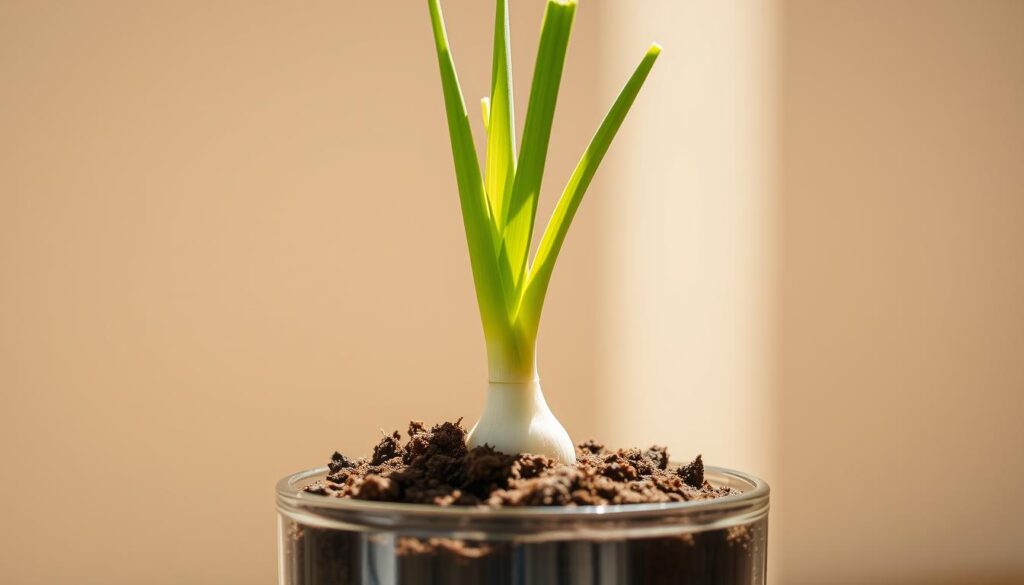
New green shoots will appear in 24-48 hours. This is amazing! With weekly water changes, one bunch of green onions can keep producing for 3-4 months.
For even longer growth, move them to soil after they’ve grown well in water. This method gives you endless garnishes for your meals. It saves you $5-10 a month on green onions.
Celery Regrowth Techniques
Celery regrowth takes a bit more time but is worth it. Cut the stalks 2 inches from the base. Place the base in a shallow bowl with ½ inch of water, with the cut side up and the root end down.
In 7-10 days, new leaves will start to grow. After 2-3 weeks in water, move the celery to soil. Cover everything except the new growth. With care, your celery will grow new stalks over the next 2-3 months.
You won’t grow a full celery bunch, but you’ll get enough for soups and seasonings. This turns food scraps into ongoing food sources, showing the beauty of sustainable living.
Bok Choy and Cabbage Regeneration
Asian greens like bok choy and cabbage are beautiful to regrow. Save the bottom 1-2 inches, including the core. Place this in a shallow container with ½ inch of water.
In 4-7 days, new leaves will grow in a stunning pattern. This makes these vegetables great for kids to watch grow, turning organic gardening into a fun family activity.
After 10-14 days in water, move your bok choy or cabbage to soil. You won’t get a full head, but you’ll have enough for salads. This shows how eco-friendly practices can be both beautiful and useful.
These projects are a great start to more advanced kitchen scrap gardening. They help you appreciate plants’ ability to regrow and make your home more sustainable. Leafy green regrowth is key to a zero waste kitchen because it reduces waste, gives you fresh food, and teaches you about sustainability.
Root Vegetable Regrowth
Unlocking the regenerative power of root vegetables is fascinating. It shows us sustainable food practices and reduces kitchen waste. These scraps can grow into new plants, turning waste into valuable resources.
Root vegetables show nature’s resilience in a clear way. With a little effort, you can grow plants from kitchen scraps. This not only cuts down on waste but also connects you to your food and teaches the family.
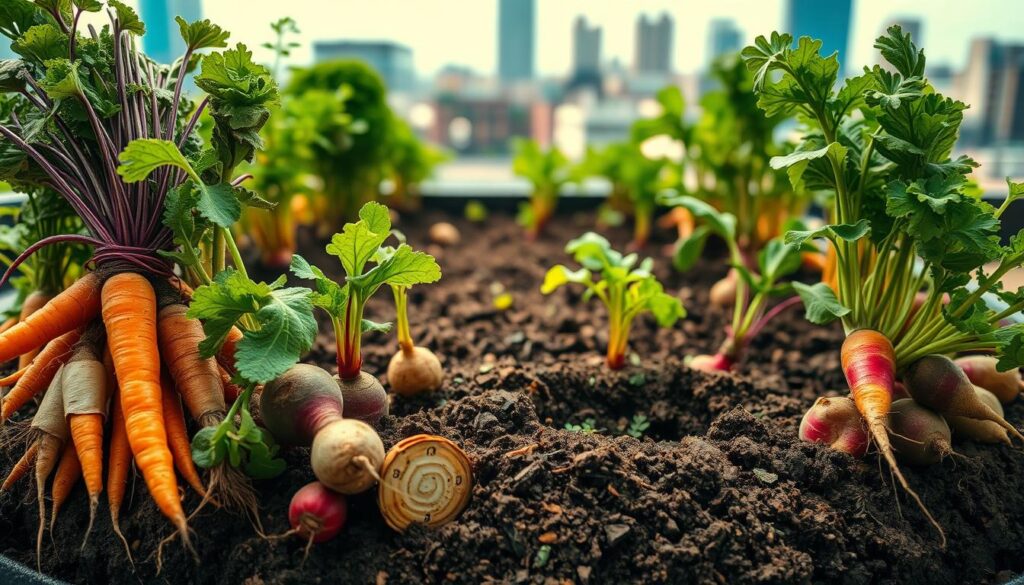
Sweet Potato Slip Production
Sweet potatoes are great for regrowth. Start with a healthy sweet potato. Hang it in water with toothpicks, with the bottom third in the water. Keep it in a warm spot with some sunlight.
In 2-3 weeks, you’ll see shoots called “slips.” When they’re 4-6 inches long, twist them off. One sweet potato can give you 8-12 slips, each becoming a new plant.
Put the slips in water until they grow roots. Then, plant them in soil. They’ll grow into sweet potatoes, turning trash into food. This shows green living in action.
Carrot Top Greens Cultivation
Carrot tops won’t grow new carrots but make tasty greens. Cut the top inch of a carrot with some green stem. Put it in a shallow dish with a half-inch of water.
In a week, you’ll see green shoots. These greens are full of vitamins A, C, and K. They’re great for garnishes, pesto, or salads. Refresh the water to keep them from getting moldy.
Use these greens in your cooking. When they stop growing, add them to your backyard composting system.
Onion Bottom Regrowth Methods
Onions are very versatile for kitchen scrap gardening. Save the bottom inch of an onion with the root system. Let it dry for 24 hours to prevent rot.
After drying, plant the onion bottom in soil with the root side down. Water well and place in a sunny spot. You’ll see green shoots in days, showing it’s working.
You can harvest in two ways. Trim the green shoots for use like green onions, or let the plant grow fully to produce a new onion bulb. This method is great for continuous harvesting, saving money and reducing waste.
Ginger and Turmeric Propagation
Ginger and turmeric are more advanced but rewarding. Start with organic rhizomes, as conventional ones have growth inhibitors. Look for pieces with visible growth buds or “eyes.”
Soak the rhizomes overnight to help them grow. Plant them horizontally in well-draining soil, burying them 1-2 inches deep. Keep the soil moist but not too wet, and warm temperatures are best.
These plants take 8-10 months to grow. But the reward is worth it, as fresh ginger and turmeric can cost a lot. Growing them at home saves money and shows the power of circular economy.
These projects fit well with other sustainable practices. Any leftover parts can go to your backyard composting system. This creates a closed-loop system. By doing this, you’ll appreciate plants more and save money and the environment.
Fruit and Vegetable Seed Projects
Turning kitchen seeds and pits into plants is a great way to reduce waste. It’s also a fun way to learn about nature. These seeds have everything they need to start growing, making them perfect for your zero waste efforts. Plus, they’re easy on your wallet and good for the planet.
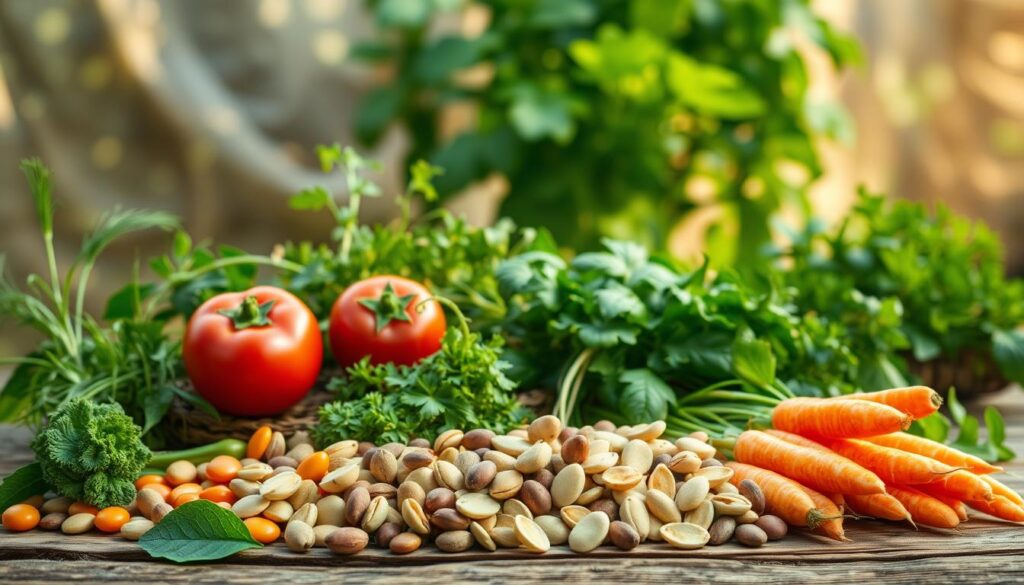
Avocado Pit Sprouting Methods
That avocado pit you usually throw away can become a beautiful houseplant. First, clean the pit well to avoid mold. This step is crucial.
To start your avocado sprouting project:
- Insert 3-4 toothpicks around the middle of the clean pit
- Suspend the pit over a glass of water with the pointed end facing up
- Ensure the bottom third of the pit remains submerged
- Place in a warm location with indirect sunlight
- Change the water every 3-4 days to prevent bacterial growth
Be patient with this project. Roots will show up in 2-6 weeks. The stem will follow in another 2-3 weeks. Even though indoor avocado plants rarely grow fruit, they’re beautiful and help clean the air.
The journey of growing an avocado from pit to plant teaches us the value of patience in sustainability. What seems like waste becomes a living reminder of nature’s cycles.
Tomato Seed Saving and Sprouting
Tomato seed saving is a cheap and effective way to reduce waste. One tomato has 150-300 seeds, worth $3-5 in store-bought packets. It’s a way to connect with your food and save money.
The fermentation method works best for tomato seed saving:
- Scoop seeds with their surrounding gel into a small container
- Add a tablespoon of water and cover loosely
- Allow the mixture to ferment at room temperature for 2-3 days
- Look for a white mold layer forming on top—this indicates the gel’s natural inhibitors are breaking down
- Rinse thoroughly in a fine mesh strainer until seeds are clean
- Spread on a paper plate or coffee filter to dry completely (3-7 days)
Once dry, store your seeds in a labeled paper envelope in a cool, dark place. Tomato seeds stay good for 4-6 years, making this a sustainable choice.
Citrus Seed Germination Techniques
Citrus seeds sprout quickly, offering fast results in your waste management efforts. They need no special treatment before planting, making them great for beginners or gardening with kids.
For successful citrus seed germination:
- Select plump, healthy-looking seeds from organic lemons, oranges, or grapefruits
- Plant immediately while fresh—citrus seeds lose viability quickly when dried
- Remove any pulp and rinse seeds thoroughly
- Plant 1/4 inch deep in moist potting soil
- Keep soil consistently moist but not waterlogged
Citrus seeds sprout in 1-3 weeks in warm conditions (70-80°F). Indoor citrus trees rarely bear fruit, but they’re beautiful and purify the air.
Apple and Pear Seed Stratification
Apple and pear seeds teach us about natural cycles. They need cold dormancy (stratification) to germinate, just like they would in nature.
To stratify apple or pear seeds:
- Clean seeds thoroughly and allow to air dry for 24 hours
- Place seeds on a damp paper towel or coffee filter
- Fold the towel and place inside a labeled zip-top bag
- Store in your refrigerator (not freezer) for 6-8 weeks
- Check periodically to ensure the paper remains damp
- Plant any seeds that begin sprouting during stratification
After the cold period, plant stratified seeds 1/2 inch deep in potting soil. Keep it moist until it germinates. This connects you with nature and turns waste into potential fruit trees.
| Seed Type | Germination Time | Success Rate | Difficulty Level | Time to Maturity |
|---|---|---|---|---|
| Avocado Pit | 2-6 weeks | 70-80% | Easy | 5-13 years for fruit |
| Tomato Seeds | 5-10 days | 90-95% | Medium | 60-85 days |
| Citrus Seeds | 1-3 weeks | 75-85% | Easy | 3-5 years for fruit |
| Apple/Pear Seeds | 2-4 weeks after stratification | 40-60% | Advanced | 3-8 years for fruit |
These seed-saving projects turn waste into growth and learning. They help you connect with your food and reduce kitchen waste. Each sprouted seed is a victory for the environment.
Even if these plants don’t produce fruit indoors, the journey teaches valuable lessons. It shows the beauty of zero waste living and lets you participate in sustainability from your kitchen.
Advanced Kitchen Scrap Projects
Advanced kitchen scrap projects turn food waste into growing opportunities. They show your dedication to a zero waste lifestyle. These projects are perfect for those who want to reduce waste and grow beautiful plants.
Pineapple Top Propagation
That pineapple crown can become a stunning tropical houseplant. Start by twisting the crown from a ripe pineapple. Then, remove the lower leaves to expose about an inch of the stem.
Let the stem dry for 5-7 days to prevent rotting. Plant it in well-draining soil, keeping it moist but not soggy. Place it in bright, indirect light for the best results.
A pineapple plant takes 18-24 months to produce fruit. But the journey is rewarding. The plant’s foliage is beautiful, even if it never fruits.
Potato Eye Regrowth Strategies
Potato regrowth can give you impressive yields. A single potato with multiple “eyes” can multiply your potato supply easily.
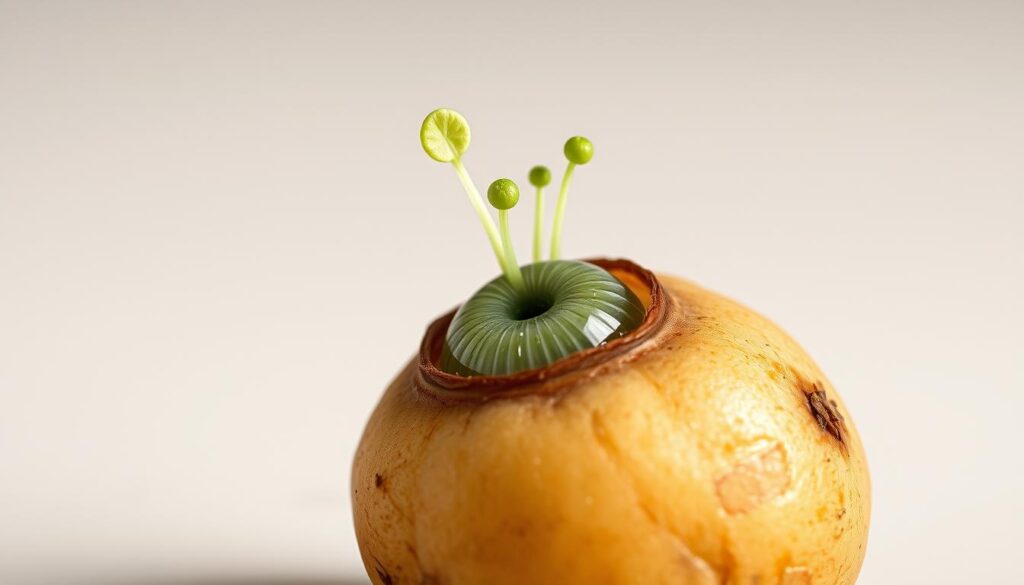
Cut your potato into sections about 2 inches square. Each piece should have 1-2 eyes. Let these sections dry for 24-48 hours to prevent rot.
Plant each section 4 inches deep in rich soil, with the eyes up. In 2-3 months, each section can produce 5-10 new potatoes. This shows how green habits can save money.
Lemongrass Stalk Regeneration
Save the bottom 2-3 inches of lemongrass when cooking. This part can regrow into a new plant.
Place the stalk base in a glass of water, changing it often. In 7-10 days, new roots will form. Transplant when the roots are about an inch long.
Your lemongrass will grow into a full plant in 4-6 months. It will provide fresh stalks, saving you money. This herb reminds you of successful organic waste management in your kitchen.
Creating a Self-Sustaining Scrap Garden
A closed-loop system where nothing goes to waste is the ultimate goal. This system combines vermicomposting with growing projects.
Start with a small vermicomposting bin that can handle 2-3 pounds of waste weekly. Red wiggler worms turn your scraps into nutrient-rich soil amendments worth a lot if bought.
Use these worm castings to feed your plants. They grow food, which creates more scraps. This cycle is sustainable.
This approach is the peak of zero waste lifestyle in food production. It reduces waste and changes how you view food systems. You’ll develop habits that benefit the environment and your wallet.
Mastering these projects takes you beyond simple regrowth. You’ll learn about plant propagation and sustainable systems. These skills will help you with even bigger projects, saving you money and providing fresh produce.
Troubleshooting Common Regrowth Issues
Learning to fix common regrowth problems turns setbacks into learning moments on your zero waste journey. Even experienced gardeners face challenges with kitchen scrap projects. But, with the right problem-solving, you can overcome most issues and improve your sustainable food practices. Let’s look at the most common problems and how to solve them to keep your projects growing well.
Preventing Mold in Water-Based Regrowth
Water-based regrowth systems are a great way to start with kitchen scrap gardening. But, they can get moldy if not kept clean. The key is regular water changes and keeping things clean.
Change the water every 1-2 days to stop bacteria and mold. Only ¼ to ⅓ of the plant cutting should be in water. Too much can cause rot and fungus.
Weekly cleaning of your containers is crucial to avoid mold. Mix:
- 1 part white vinegar
- 10 parts water
Use this solution to rinse your containers weekly. It stops fungus without harmful chemicals. If you see cloudy water or a film, change the water right away to stop mold.
“The most common mistake in water propagation is neglecting water quality. Clear, fresh water is the foundation of healthy regrowth—when in doubt, change it out.”
Dealing with Pest Infestations
Pests can ruin your kitchen scrap projects. But, catching them early and using natural methods fits well with zero waste living. Check your plants often, focusing on the undersides of leaves where pests hide.
For a natural pest control, mix:
- 1 tablespoon mild dish soap
- 1 quart of water
Put this in a spray bottle and spray affected plants every 5-7 days. This method controls pests like aphids and spider mites without harmful chemicals.
If pests keep coming back, isolate the affected plants. You can also introduce beneficial insects like ladybugs if your plants are outdoors or in a greenhouse.
Nutrient Deficiency Identification
When plants move from water to soil, they might show signs of nutrient lack. Learning to spot these signs helps you help your plants.
| Symptom | Likely Deficiency | Natural Remedy | Application Method |
|---|---|---|---|
| Yellowing leaves (older leaves first) | Nitrogen | Compost tea or coffee grounds | Weekly soil application |
| Purple-tinged leaves | Phosphorus | Crushed eggshells or bone meal | Mix into soil monthly |
| Brown leaf edges | Potassium | Banana peel water | Bi-weekly watering |
| Yellowing between leaf veins | Magnesium | Epsom salt solution (1 tsp/gallon) | Monthly foliar spray |
Instead of buying fertilizers, make compost tea. Steep 1 cup of finished compost in 1 gallon of water for 24-48 hours. Then, strain and use it to water your plants weekly.
This method turns vegetable scraps into compost, which feeds new plants. It’s a great example of the circular economy in action.
Reviving Failing Regrowth Projects
When your regrowth projects start to decline, a careful check can often save them. Look at the three main growing conditions:
- Light: Most kitchen scraps need bright, indirect light. If leaves are pale or reaching for light, they need more light.
- Water: Keeping the soil moist is key, but too much water can harm. Let the soil dry a bit between waterings.
- Temperature: Keep the temperature between 65-75°F (18-24°C) for best growth.
If a plant is failing despite good conditions, try taking a cutting from a healthy part. Many plants can grow from small sections, giving you a second chance.
For really struggling plants, try a “plant intensive care” method. Use a clear plastic container or bag to create a humid dome over the plant. This helps many plants recover.
Even if projects fail, they still help your composting system. Every challenge teaches you something new, making you better at green living.
By tackling regrowth problems patiently and systematically, you learn a lot about plant needs. This knowledge improves all your sustainable food practices. It shows how working with nature can lead to growth, learning, and renewal.
Seasonal Kitchen Scrap Planning
Planning your kitchen scrap projects with the seasons is key to sustainable living. It ensures growth all year round. By adjusting your methods for each season, you support eco-friendly gardening and respect nature’s cycles.
Winter Indoor Regrowth Projects
In winter, focus on indoor projects that do well in low light. Herbs like basil and mint grow quickly in water (7-10 days). They’re great for windowsills. For darker homes, a small grow light (10-15 watts) used 4-6 hours daily keeps plants happy without wasting energy.
Winter is also a good time to start slow-growing projects. Avocado pits, for example, are ready for spring transplanting.
Spring Transition Techniques
As days get longer, slowly move indoor plants outside. Start with 1-2 hours of filtered sunlight, increasing by 30-60 minutes every two days. This helps plants adjust without shock.
Spring rains are great for cold-tolerant plants like onion bottoms and potato eyes. They can handle light frosts and start growing roots in your garden.
Summer Heat Management Strategies
Most plants prefer temperatures between 65-80°F. In heat waves, water them twice a day. Use a mesh screen to shade them, lowering leaf temperature by 5-10°F.
Grouping containers creates humidity pockets. This helps plants stay healthy during the hottest days while saving water. It’s a big step in environmental conservation.
Fall Harvest and Preservation Methods
Preserve summer’s bounty to keep your green household practices going. Dry herbs to keep 70-80% of their nutrients. Freeze leafy greens in ice cube trays for winter soups.
Make herb-infused vinegars to save flavors and give thoughtful gifts. As it gets colder, bring promising projects inside. This keeps your sustainable kitchen cycle going through winter.

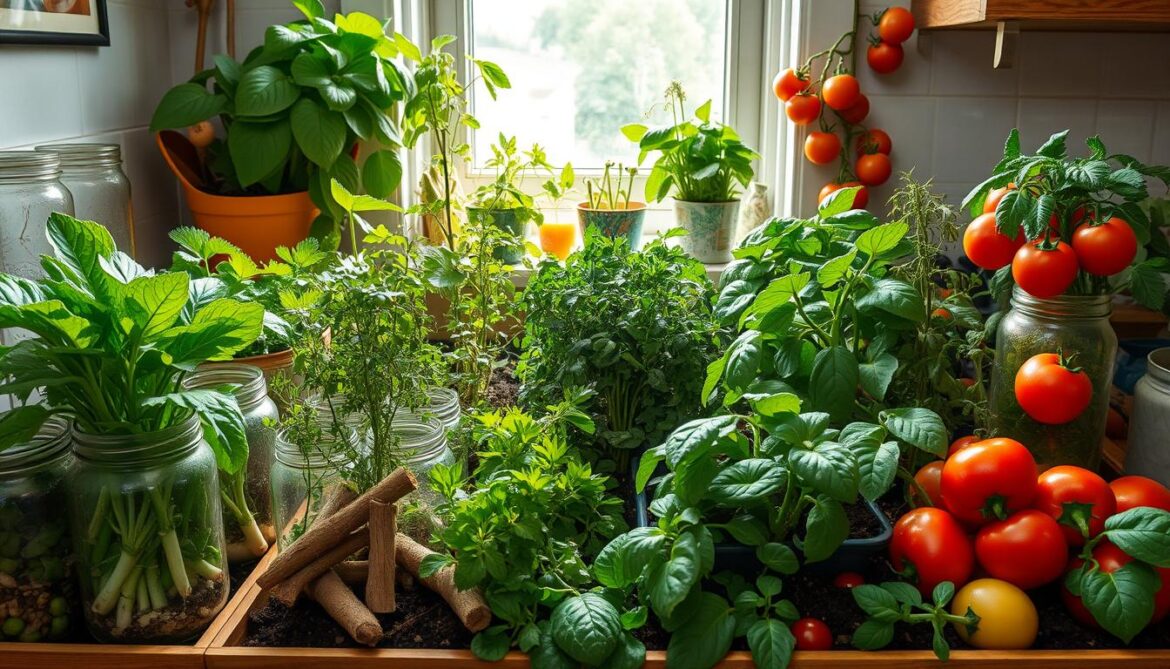

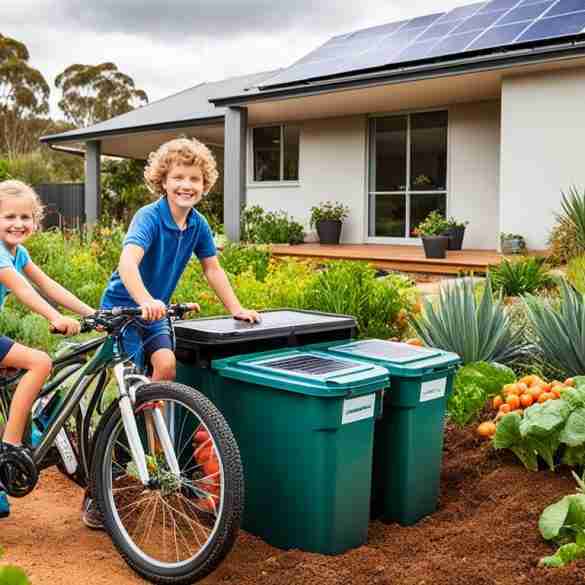


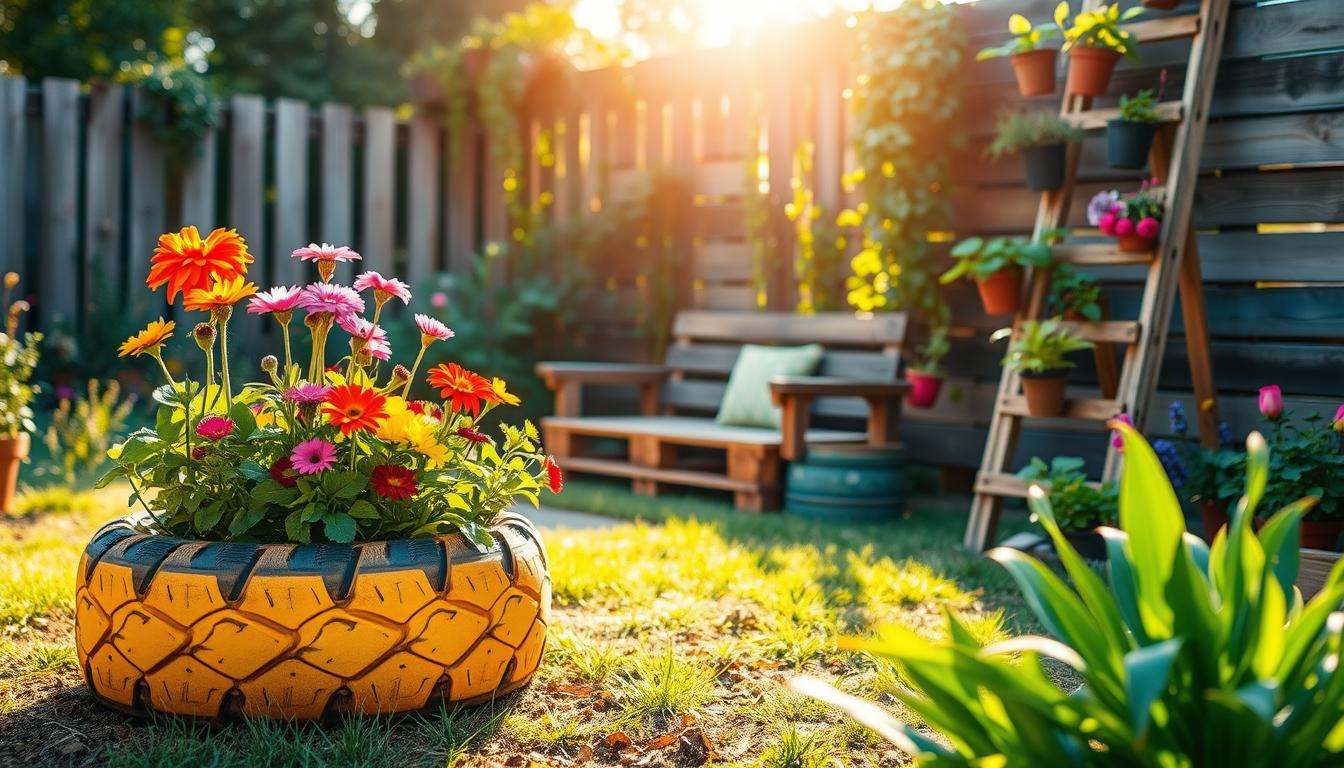


2 comments
[…] Swapping paper towels for reusable cloths saves money and reduces waste […]
[…] of waste is recycled. By sorting waste and using recycling programs, we can increase this number. Composting food scraps and garden waste also helps reduce landfill […]